Furikake (Japanese Rice Seasoning)
Whip a batch of the furikake and infuse all your favorite dishes with a deep umami flavor. This Japanese rice seasoning combines 3 types of seaweed and dried fish flakes with robust soy sauce, sake, and other ingredients to create a rich and savory blend.
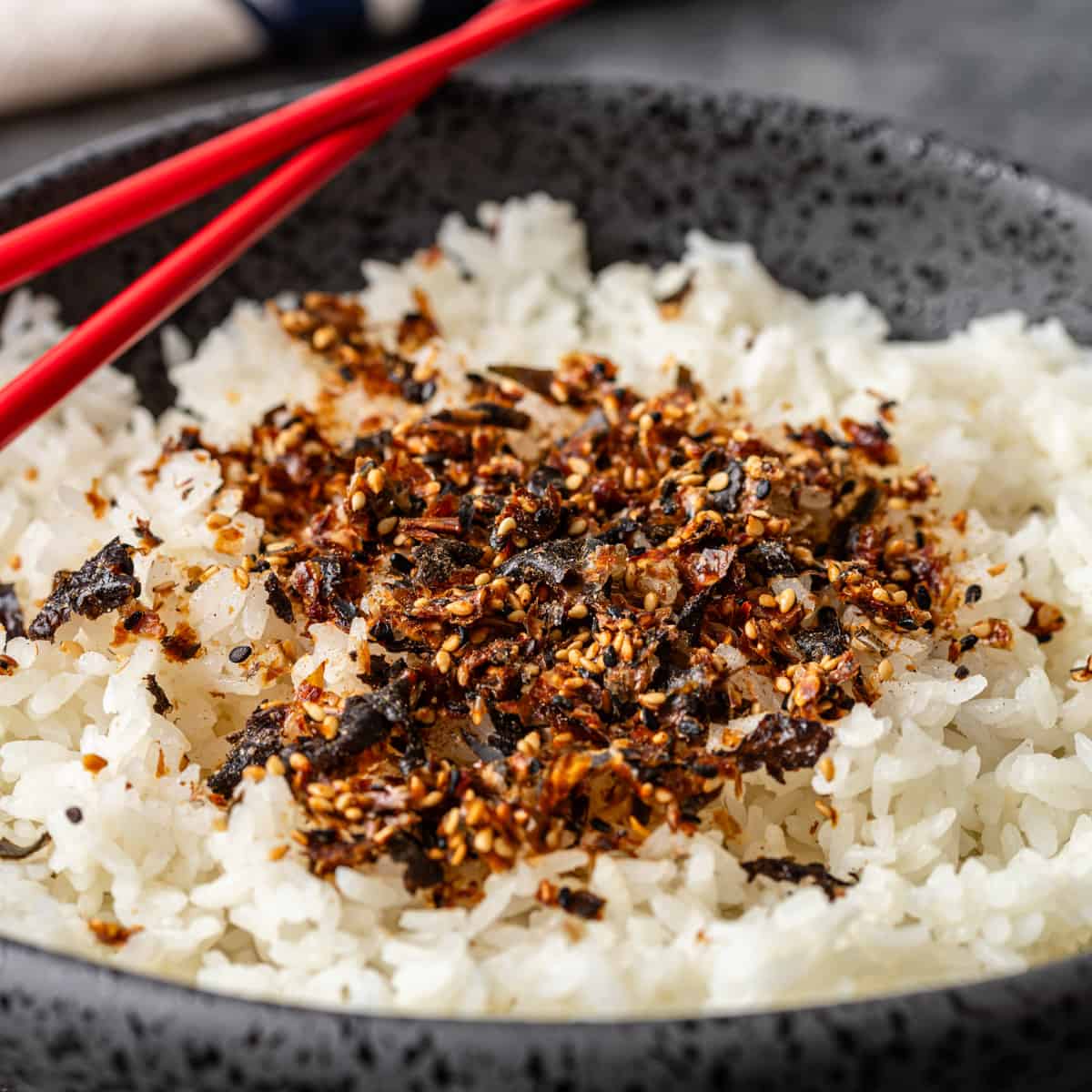
I’m a huge fan of crafting DIY Spice Blends, and this furikake recipe is a shining example of why. This seasoning blend adds intense umami flavor and an irresistible crunch to everything it touches while giving us a window into the rich tradition of Japanese Cuisine.
This Japanese rice seasoning is not difficult to make, but it does require a lot of ingredients you might be unfamiliar with. Stay curious, be creative, and have fun inviting new, exciting ingredients into your pantry. You might be exploring flavors you have never tasted before, so enjoy the ride!
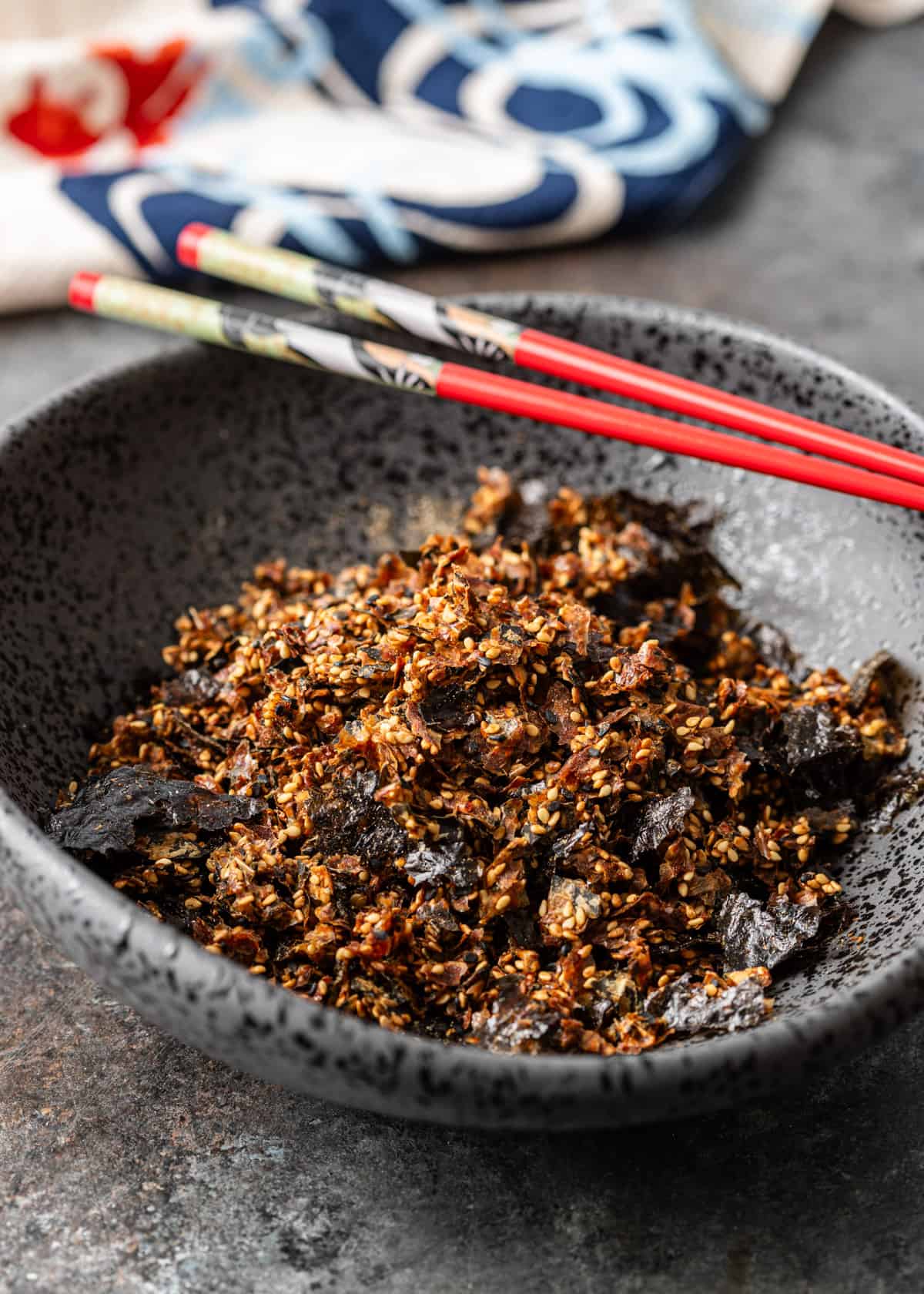
Table of Contents
If you are feeling inspired to dive into Japanese cooking, try making a batch of Dashi Soup Stock along with this spice blend. Whenever I do, I’m left with the simmered kombu and katsuobushi. I let these steeped ingredients dry out again and repurpose them to make my furikake seasoning. No need to let any good ingredients miss their full potential of use and why be wasteful?



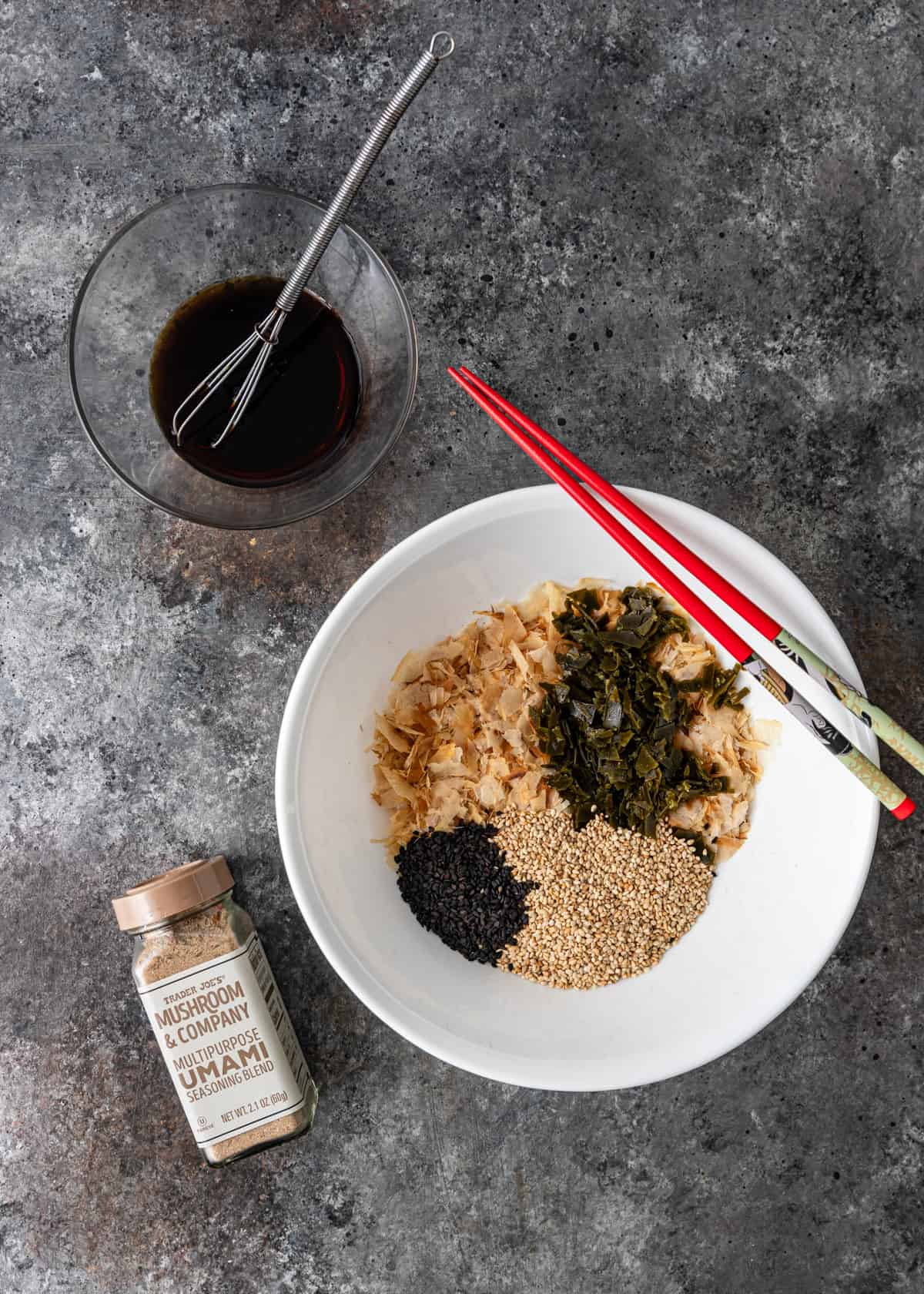
- Soy Sauce – Sets the tone for the spice blend with a rich, savory robustness.
- Sake – Adds a rich, floral aroma and gentle sharpness to the flavor profile.
- Mirin – A sweet, tangy rice wine with a syrupy texture.
- Sugar – Adds just the right dash of complementary, harmonizing sweetness.
- Katsuobushi – Dried, smoked, and fermented flakes of skipjack tuna that add a deeply fishy, meaty flavor to the blend.
- Kombu – Another name for dried kelp, adds rich umami flavor with a briney, mushroom-like flavor.
- Sesame Seeds – A blend of regular and black sesame seeds adds a dynamic texture and a spectrum of delicate, nutty flavors.
- Nori – The version usually used to wrap sushi, you’ll usually find this dried seaweed sold in sheets and sometimes as flavored crispy snacks. I get mine (Open Nature brand) at Costco, but you can also find it in any Asian market as well as most major supermarkets.
- Umami Seasoning – While this is an optional ingredient, it is HIGHLY recommended for the intense layer of flavor it adds. I like Trader Joe’s multipurpose umami seasoning for its natural, additive-free ingredient list. You can use another brand if desired, but be sure to check the labels if you are concerned about MSG in your recipe.
- Aonori – A dried, brightly colored green seaweed with a robust, aromatic flavor.
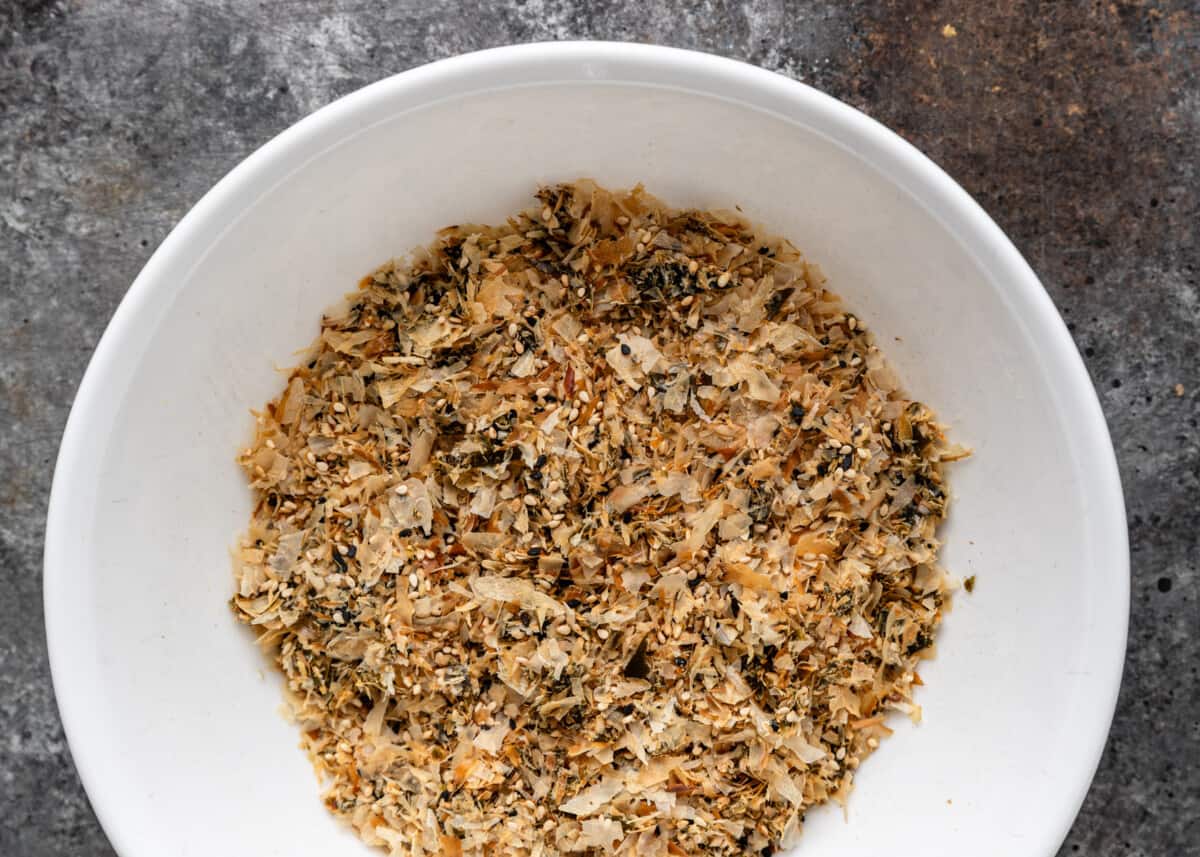

Ingredients Doing Double Time
Whenever making dashi (Japanese soup stock) from scratch, I always have kombu and katsuobushi leftover.
To repurpose these in another way, I give them a second life by making homemade furikake.

- Prepare the Oven. Preheat your oven to 250 degrees F and use parchment paper to line a baking sheet. Set aside.
- Blend Wet Ingredients. Combine the soy sauce, sake, mirin, sugar, and salt together in a small bowl. Mix together until the sugar is mostly dissolved, then set aside.
- Blend Dry Ingredients. Use a large bowl to combine the katsuobushi, kombu, and sesame seeds, mixing them together with chopsticks or a fork.
- Combine Mixtures. Gently drizzle the soy sauce mixture over the dry ingredient blend, distributing it evenly. Use the chopsticks to fluff and mix the two blends until they are fully incorporated.
- Transfer to Baking Sheet. Transfer the freshly blended furikake to the prepared baking sheet, spreading it out evenly to reach the edges of the pan. Bake for 10 minutes before removing and checking for clumps. Use your chopsticks to break up any clumpy or overly congested areas.
- Bake to a Crisp. Return the baking pan to the oven and cook for another 10-12 minutes. You want the spice blend to be dry and crispy. Remove it from the oven and set on the counter to cool completely.
- Add Seaweed. Using a knife, scissors, or your hands, break up the nori and add it into the mix. Then, if desired, add in the aonori and/or the umami seasoning. Both of these ingredients are optional but HIGHLY recommended. Store in an airtight jar and enjoy within 2 weeks.

Furikake is a Japanese rice seasoning that adds a deliciously crispy texture and salty, umami flavor to anything it is added to. Sesame seeds add a plump, crispy mouthfeel, while seaweed ingredients like nori and kombu add layers of deep, ocean-kissed savoriness.
These overtones are enhanced with the addition of tangy soy sauce and sake, plus a kiss of sweetness from sugar. The overall effect of this combination creates a seasoning blend that activates and tantalizes just about every taste bud on your tongue!
Why do you need to cook the ingredients?
Dry ingredients absorb all the delicious wet seasonings (soy sauce and mirin), and then become dry. So the ingredients will be flavored. If you don’t cook the mixture, loose dry seasonings such as sugar and salt will sink at the bottom of the container and you will end up with a flavorless furikake.
Some store-bought versions of this spice blend might contain MSG, but this recipe is free of the additive. Honestly, there is simply no need. The richly flavored, ocean-based, salty ingredients included in the blend cover all the aspects of umami flavor that MSG is famous for enhancing.
Commonly known as Japanese rice seasoning, this topping is great for sprinkling on rice and a wide variety of other dishes.
– Rice – First as a seasoning over rice, noodles or congee.
– Eggs -Either scrambled or hardboiled, this is a great addition to season with
– Popcorn – My favorite is to sprinkle powdered Ranch seasoning, Turkish Spice Blend, Berbere Spice Mix or Parmesan cheese, but this is another savory punch of flavor to any batch of freshly popped corn
Use this blend to enhance the flavor and texture of any of your favorite Asian-themed dishes. Here are a few suggestions to get you inspired:
– Jazz up a bowl of simple Jasmine Rice or your next batch of Hibachi Fried Rice.
– Sprinkle some over a nice fresh Ahi Tuna Poke Bowl or Sunomono Salad.
– Enjoy with sushi takeout or use with your own Mango Shrimp Sushi Stacks.
– Dress up a bowl of Hot and Sour or savory Miso Soup Recipe.
– Add a bit to Japanese Beef Curry or any of your favorite Stir Fry Recipes.
How long does furikake last?
This homemade furikake lasts for 2 weeks or add a Food Safe Silica Gel Desiccant Packet in whatever airtight container, and the furikake is good for 1-2 months at room temperature.

Share this recipe on Pinterest!
Love this recipe? Share it with the world on Pinterest.

Furikake (Japanese Rice Seasoning)
Ingredients
- 1 tbsp soy sauce
- 1 tbsp sake
- 2 tsp mirin
- 1 tsp sugar
- 1/2 tsp kosher salt
- 20 grams katsuobushi dried bonito flakes
- 10 grams kombu dried kelp, optional (See Note 1)
- 4 tbsp toasted sesame seeds
- 1 tbsp black sesame seeds
- 5 grams nori shredded (See Note 2)
Optional Add-Ins
- 1 tsp Trader Joes Multipurpose Umami Seasoning Blend
- 1 tsp aonori dried green layer seaweed (See Note 3)
Instructions
- Preheat oven to 250°F. Line a baking sheet with parchment paper and set aside.
- In a small bowl, stir the soy sauce, sake, mirin, sugar, and salt together until the sugar is mostly dissolved. Set aside.
- In a large bowl mix together the katsuobushi, kombu, sesame seeds with chop sticks.
- Drizzle the soy sauce mixture over the dry ingredients evenly, fluff and mix with chopsticks to incorporate thoroughly.
- Transfer furikake to prepared baking sheet and spread evenly to edges. Bake for 10 minutes. Remove from oven and using chopsticks, break up pies to evenly dry and avoid clusters. Return to oven and bake another 10-12 minutes, or until completely crisp. Let cool completely.
- Using your hands, knife or scissors, cut the nori into small pieces and mix into the furikake along with the optional aonori and/or Trader Joes Multipurpose Umami Seasoning Blend (HIGHLY recommend). Store in an air tight jar. It can be refrigerated for up to 2 weeks.
Notes
- If using repurposed katsuobushi from making dashi, use 25 grams and chop fine, otherwise, crush 20 grams of dried with hands, then use in recipe.
- If using repurposed kombu from making dashi, use 15 grams and chop fine OR cut the dried kombu (dried kelp) into thin strips and then turn strips 90° and cut into small pieces. Place in small bowl with 2 tablespoons hot water and soak for 5 minutes. Drain and squeeze excess water, then use in recipe.
- Nori is typically used to wrap sushi and is a green seaweed that is dried. I use 1 package (5g) of Open Nature’s Roasted Seaweed Snack from Costco and can be found in most markets like Safeway, Albertsons and WINCO in the Asian food section, or any Asian market.
- Aonori (dried green laver or seaweed) is green seaweed that is dried and powdered. It’s extremely aromatic.
- Adapted from Marc over at No Recipes.
Nutrition
The information shown is an estimate provided by an online nutrition calculator. It should not be considered a substitute for a professional nutritionist’s advice.
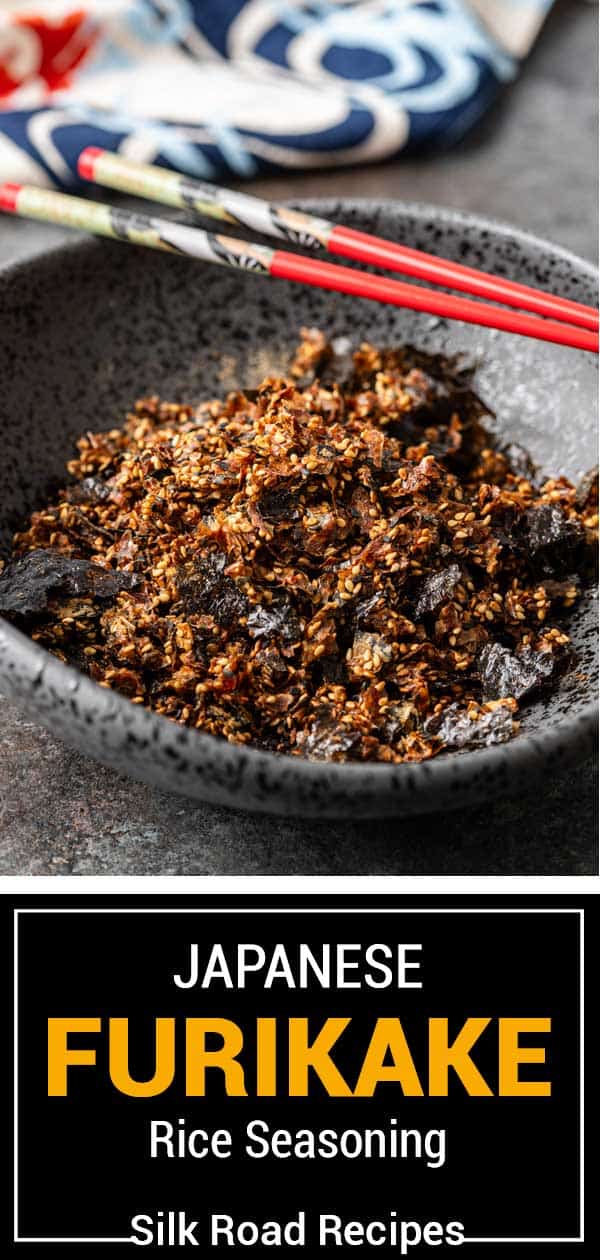

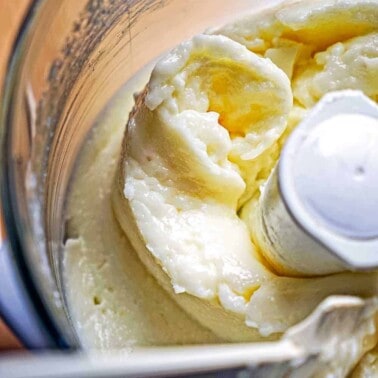

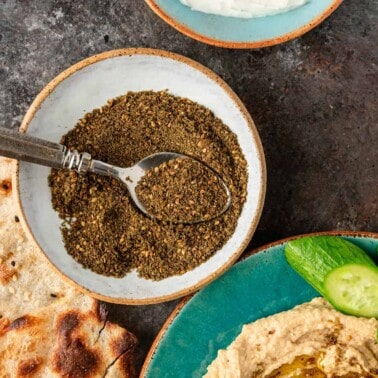









Many thanks for this post, now I can make my own anytime. It was so good, love dit on my eggs as well as rice of course! Great use of the katsuobushi, kombu after making dashi. You’re the best.
Excellent, so happy you enjoyed this one Sade.